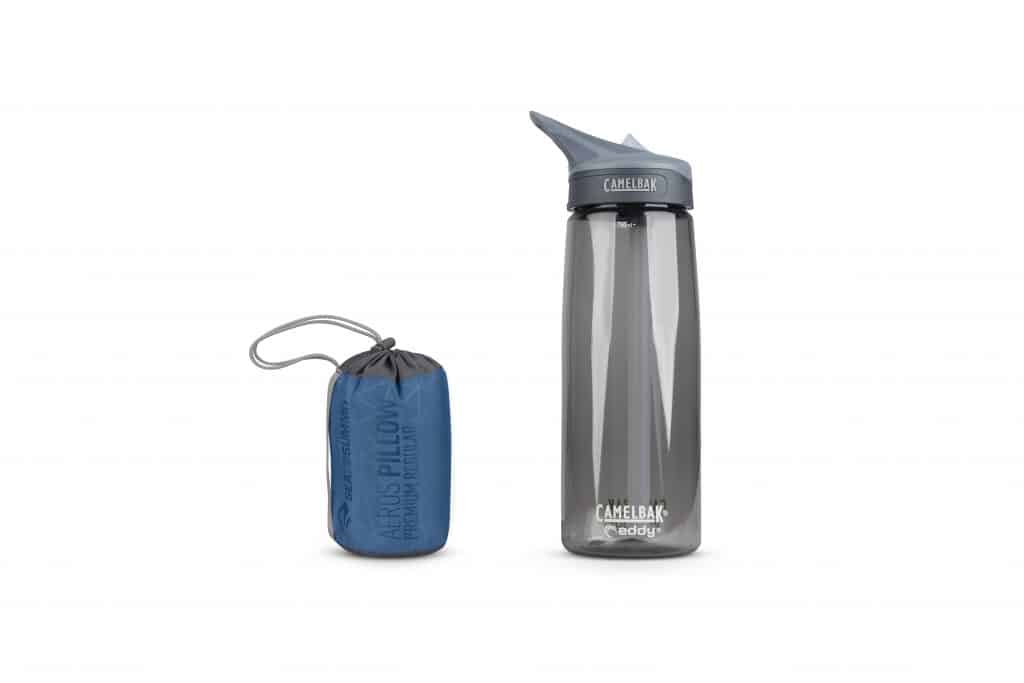Well, if the last year or so has taught us anything about living through a pandemic, it’s the value of a great online shopping experience. And if I think about what can make an online click great, it comes down to confidence. Confidence that the platform is easy to use, secure and more than anything, confident that I’m making the right choice without having a real live person to talk to… especially when parting with serious money, like what is needed for a foundational bit of gear like a sleeping bag, mat or a full sleep system.
‘Oh, Great Genie of the Aussie Outdoors, if only there was a magic gear concierge, to curate the perfect equipment playlist, for my preferences, size and fit, and then deliver it to my door… like a handy hiking Spotify.’
Said Caro… whilst endlessly scrolling through options
Thankfully, the company that seems to spend a lot of time coming up with solutions to everyday outdoor problems – Sea to Summit (S2S) – have come up with the Sleep System Finder.
Call me cynical, but I was skeptical that an online questionnaire could deliver what my tall (I’m 5’9”/178 cm), female, back sleeping, wonky body (which feels the cold) needed – without trying it out in a shop. Here’s what I found:
Over a series of 10 questions, the S2S Genie grilled me with exactly the type of questions you’d hope a good shop assistant would ask, mostly starting with the words, ‘where’, ‘what’, ‘which’ and ‘how’. Thankfully, just like sitting an exam in school and feeling the relief when you realise it’s multiple choice, the answers are presented in a simple graphic form, with basic explanations.
Once the answers are complete, the 3 second delay in waiting to receive your results, is like waiting for Santa to arrive (or for those of us old enough to remember, watching Perfect Match and waiting for Dexter’s compatibility rating). The results offer three suggestions for each piece of gear in the sleep system: a sleeping bag, liner, mat and pillow, and then highlights the best match for you.
Given that there are 47 different sleeping bags and quilts in their range, this takes the exhaustion out of doing the research and the confusion out of choosing.
For this test, I opted for the type of gear and uses I am most familiar with, so I could compare based on my experience – lightweight hiking gear, for a cold, tall, back sleeper. Here’s the gear they recommended and what I found:
1. Sleeping Bag – Sea to Summit Flame FmIII Women’s (Long)
Call me cynical (again) but I’ve never really been one for ‘women’s specific’ gear. After four nights surrounded by the 850+ loft of the S2S Flame FmIII’s ULTRA-DRY down and its women’s specific mummy contouring, I’m changing my mind. The online system had very wisely chosen the long size for me and inside I found a generous amount of room around the torso within vertical baffles, before it tapered with horizontal ones that led down to the foot box. This room inside provides scope for extra layering (I wore a single layer of thermals) if you want to boost the rating below it’s -4c comfort level. I’m told I sleep like I’m in a coffin, so as a dedicated back sleeper (with occasional forays to the sides), I appreciated this extra torso room for elbows, which rested comfortably without feeling contained or claustrophobic.
The hood shape naturally hugged my head and needed only minimal cinching to draw it in around my face. It’s the single cinch point on this bag and doesn’t have a second cinch point around the shoulders*.
The YKK flip zipper (right side opening) gives an option for cooling things down at the foot box if things heat up and is hidden within a draft tube to stop unwanted chills in the night.
I never need to wonder what goes on inside a down sleeping bag again, as the translucent 10D shell fabric offers a unique view of the RDS (Responsible Down Standard) certified filling.
At 850 grams (my scales), including the Ultra-Sil Nano compression sack, this bag squeezed down to 28 cm long. A very good bag.
2. Sleeping Pad – Sea to Summit Etherlight XT WL (Women’s Long)
I’ve slept on many different mats over the years, and the Etherlight XT felt like the Rolls Royce… or is that Tesla these days?
Shining a light on the problem solving nature of Sea to Summit products, the first thing I noticed is that the Airstream Pump Sack is built into the stuff sack. Smart. Although this adds to the packed length of the mat (29 cm), it was easy to use, taking just over 3 sacks of air to fill it up and removes the huff n’ puff of blowing up manually… not to mention the risk of mould growing inside.
The comfort of this mat is outstanding and given that there is a cushy 10.1 cm of plump and tender air between my tired body and the cold, hard ground of the Blue Mountains National Park, it makes sense. The multi-function valve allows for adjustments to find your Goldilocks level of ‘just right’ firm-to-soft ratio and 30D/40D materials and cushioned pattern feels robust in comparison to other brands. With noise being one of the common complaints with inflatable mats, this one is quieter than other models, but I found it had a lower ‘rubbing noise’ tone rather than a high crinkley sound like other manufacturers.
As per my preferred ‘corpse-pose’ yoga sleep position, the width of this mat was the real stand-out for me; both elbows rested comfortably on the mat, with room to move. If you’re a side sleeper, you’ll love that 10cm height of hip-loving joy.
The online system chose the Women’s Long mat for me, which my scales called-in at 670 grams including stuff sack. As a cold sleeper, I tested this at temps down to 2c and the warmth (R3.2, ASTM standard tested) of the mat was excellent. They use two different types of insulation that both reflects your own warmth back to you and manages conductive heat loss.
The only improvement I can think of would be to further develop the stuff/pump sack to add a compression strap reducing the overall packed size.
3. Liner – Thermolite Reactor Compact Plus+ (short)
Up to this point, my Sea to Summit online personal shopper had played its cards straight out of Indiana Jones and the Holy Grail and ‘chosen wisely’. So when I saw that the liner had been supplied as size short, I was surprised… and not for the first time. Turns out this liner only comes in one size that they describe as being, ‘ideal for women and youth’ and ‘for gram counters under 6 feet tall’.
Thermolite – a fabric designed for lightweight warmth – is made by the people behind other technical materials such as Lycra and Coolmax.
This isn’t the first time I’ve used a S2S Thermolite Reactor liner. I like the benefits of adding warmth to a sleeping bag, whilst also keeping all my dirt and sweat to myself, rather than sharing it with my sleeping bag. Let’s face it, cleaning bags is a pain and a liner can help minimise the need for regular cleaning.
When it came to getting into bed, I discovered the benefit of using a smaller liner with a larger sleeping bag and what my * in the sleeping bag review refers to. With the shorter liner, I was able to use it’s cinch cord to draw the bag over my shoulders, which felt like a warm hug. Nice.
4. Pillow – Aeros Premium Pillow (regular)
Many outdoorsy folk look upon pillows as a luxury optional item. Sure, you can stuff lumpy clothes into your stuff sack to make an equally lumpy pillow, but like travelling business class, once you’ve been there, you never want to go back behind the curtain.
For a sliver of the price of an airfare (remember those?), 80 grams and about the size of a tennis ball, you can get the business class of camping pillows with the Aeros Premium. This lil’ guy is perfect for squeezing down into the awkward little bottom corner of your backpack and comes with the S2S Pillow Lock system. Which doesn’t mean much unless you have a S2S mat, which comes with the stick-on velcro-esque patches to hold your pillow in place all night.
The 50D brushed polyester cover fabric is super soft against your cheek (or your face, you wacky tummy sleepers!) and the synthetic filling (between the fabric and the TPU bladder) wicks sweat away on those hot summer nights.
The height is easily adjustable with the mini-valve, which doesn’t fit the sleeping mat inflation sack, so you’ll need to puff into this one. A potential improvement could be a removable cover for washing.
This article first appeared in Great Walks Magazine.






















